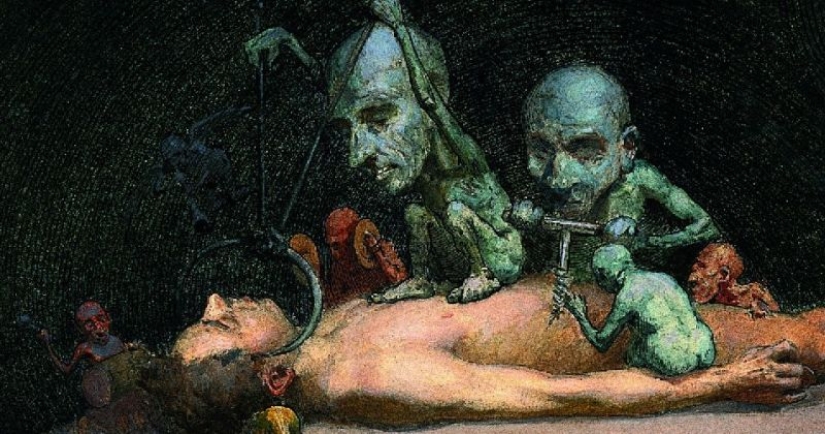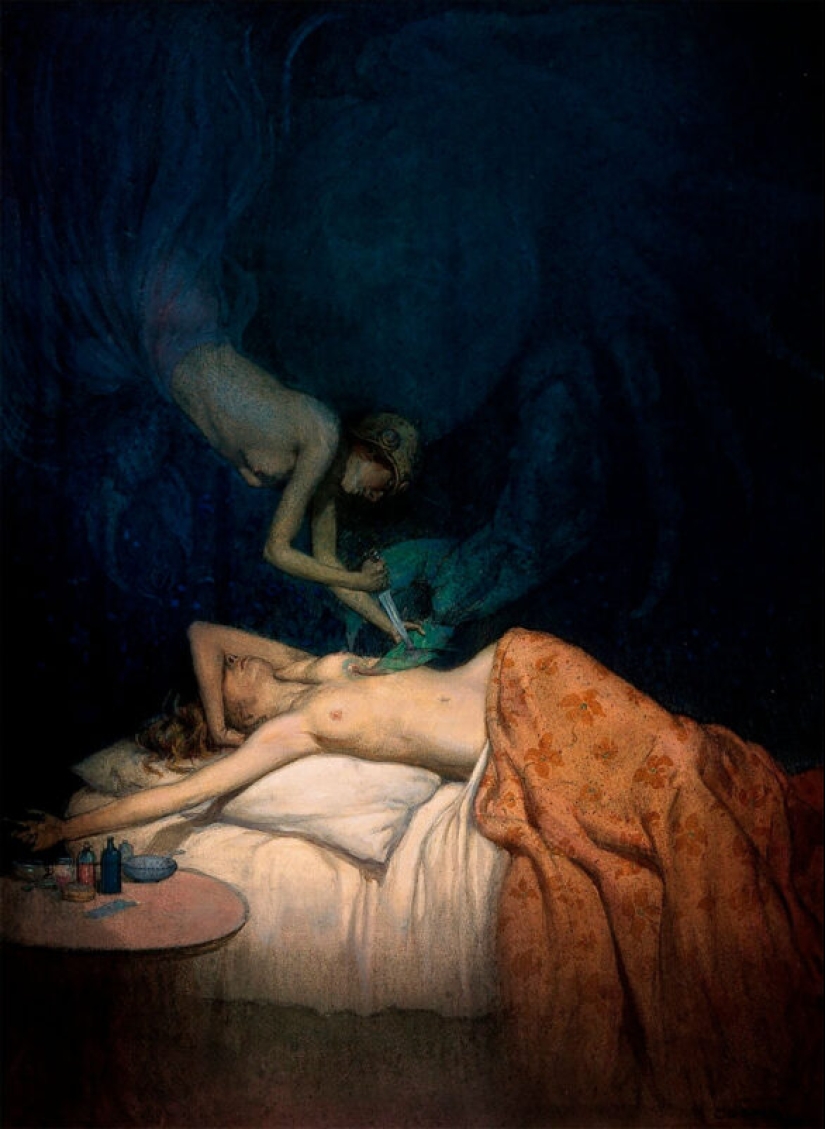The Artist Who Paints Death: Richard Tennant Cooper and his plague Fantasies
Categories: Culture
By Pictolic https://pictolic.com/article/the-artist-who-paints-death-richard-tennant-cooper-and-his-plague-fantasies.htmlThe artist is a creative person, so death, illness and chaos rarely attract masters of painting, especially nowadays. But if the master still gets down to business, then he gets goosebumps on his skin. This is the gift of depicting death possessed by the British artist Richard Tennant Cooper (Richard Tennant Cooper), who left his descendants creepy, warning-like allegorical paintings about diseases and epidemics.

Sir Richard Tennant Cooper (1885-1957) was born in the English county of Kent, but he preferred to study painting with Parisian masters. In his youth, Richard was hot and ambitious — he dreamed of becoming the best artist in the world. Unfortunately, even the most virtuoso painter must eat, so instead of creating masterpieces, Cooper spent a significant part of his life drawing illustrations for magazines.
Working group. 1918. A painting by Richard Tennant Cooper dedicated to the First World War
Despite the prose of life, the artist still found time for true creativity and entered the history of European art. Cooper has a lot of serious works and we want to show you some of them dedicated to not the best moments of life. Cooper's series of paintings devoted to diseases is gloomy and saturated with hopeless despair. But this is precisely the value of these works — they have become a kind of warning to humanity, which sometimes forgets that it is very vulnerable and mortal.

The plague, which has claimed more lives than any of the bloodiest wars, has not yet been completely defeated. The epidemics of the" black death " no longer devastate entire cities and provinces, but its bony hand constantly appears out of the darkness and gathers its harvest in dozens of countries around the world.
Syphilis, always considered a disease of vice and intemperance, is shown by Cooper in the form of an ugly, ulcerated dwarf. He warms up in the doorway with a prostitute leaving a drunken reveller-now he is completely at his mercy.

Another canvas dedicated to syphilis. It shows a man coming out of the bedroom of a fallen woman, who, along with death in a hoodie, looks after him. In the distance, a huge crowd of emaciated naked men is visible, which makes it clear the scope that a "bad disease" can take.
Cholera is a disease of dirty water. Therefore, in the artist, this disease appears before emaciated people from a puddle shrouded in fetid miasma, in the middle of a squalid urban slum. Behind the cholera is a cart, on which the funeral team puts the bodies of the victims.

Diphtheria can kill everyone, but at all times this disease has been the most dangerous for children. The terrible death from suffocation is depicted by Cooper in the form of an evil spirit of death, pulling a bony hand to the neck of a child.
In the Middle Ages, patients with leprosy were obliged to wear a long robe covering the disfigured face and body, and a bell with which the doomed person notified everyone of his approach. This is exactly how the British artist depicted leprosy. Armed men on the stairs, seized with fear, show that neither swords, nor spears, nor military valor will save you from a terrible disease.

Tuberculosis, or as they used to say — consumption, kills a person slowly. Therefore, the disease is shown in the form of death, standing with an hourglass at the bedside of a dying girl. The effect of the picture is enhanced by a calm autumn landscape in the distance, symbolizing extinction.
Typhus was brought to people by parasitic insects, so Cooper depicted it in the form of a winged death, generously scattering some small creatures over a dirty city pond.

Breast cancer still claims hundreds of thousands of lives every year around the world. In Cooper's painting, this ailment is depicted in the form of a monster, whose claw has sunk into a woman's breast. On the other hand, the spirit of medicine in the helmet of an ancient hero, armed with a dagger, rushes to the aid of the patient.
Keywords: England | Illustrator | Syphilis | Death | Cholera | Artist | Plague | Epidemic
Post News ArticleRecent articles

Soap operas have continued popularity among viewers of all ages. To achieve permanent audience, the TV will go to any trick, until ...

Shondong is the largest cave in the world. It is so huge that it has a river, a jungle, and its own climate.
Related articles

How much do you know about the United Kingdom? No, not about England, but about the whole of Great Britain as a whole? I bet you've ...

Pascal Campion, an American illustrator of French origin, tells small stories with the help of his drawings. He looks in the ...

It is considered that kings and queens are prim, reserved and a little boring. But the women we want to talk about below prove the ...

Admit it honestly: at least once in your life you confused Manet and Monet, Bruegel could not distinguish from Bosch, and the ...